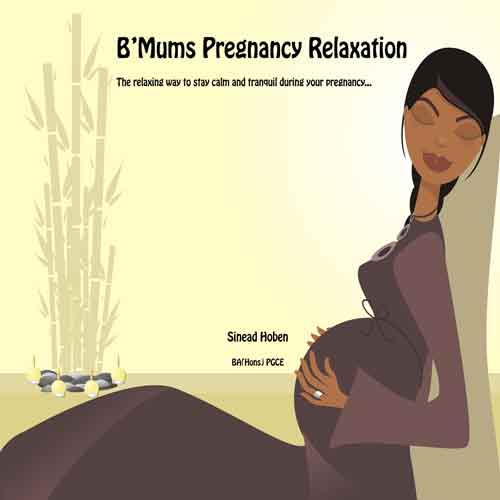Blocked Ducts and Mastitis
Mastitis is a bacterial infection of the breast that usually occurs in breastfeeding mothers. However, it can occur in women who are not breastfeeding or pregnant, and can occur even in small babies of either sex.
Nobody knows exactly why some women get mastitis and others do not. Bacteria may gain access to the breast through a crack or sore in the nipple, but women without sore nipples also get mastitis, and most women with cracks in the nipple do not.
Mastitis needs to be differentiated from a plugged or blocked duct, because a plugged or blocked duct does not need treatment with antibiotics, whereas mastitis often, but not always, requires treatment with antibiotics. A blocked duct presents as a painful, swollen, firm mass in the breast. The skin overlying the blocked duct is often quite red, similar to what happens during mastitis, but less intense. Mastitis is usually also associated with fever and more intense pain as well. However, it is not always easy to distinguish between a mild mastitis and a severe blocked duct. Both are associated with a painful lump in the breast. Without a lump in the breast, one cannot make a diagnosis of mastitis or a blocked duct. A blocked duct can, apparently, go on to become mastitis.
In France, physicians also recognize something they call lymphangite that is fever associated with skin which is hot and red, but there is no underlying painful mass. They do not believe this requires treatment with antibiotics. I have seen a few cases that fit this description in my practice, and indeed, the problem resolves without antibiotics. But then, often a full blow mastitis also resolves without antibiotics.
As with almost all breastfeeding problems, a poor latch, and thus, poor draining of the breast sets up the situation where mastitis is more likely to occur.
Blocked Ducts
Blocked ducts will almost always resolve spontaneously within 24 to 48 hours after onset, even without any treatment at all. During the time the block is present, the baby may be fussy when nursing on that side, as milk flow may be slower than usual, probably due to pressure causing collapse of other ducts. Blocked ducts can be made to resolve more quickly by:
Continuing breastfeeding on the affected side
Draining the affected area better. One way of doing this is to position the
baby so his chin “points” to the area of hardness. Thus if the
blocked duct is in the outside, lower area of your breast (about 4 o’clock),
the football hold would be best. Another way of achieving better draining
of the breast is using breast compression while the baby is feeding, getting
your hand around the blocked duct and using steady pressure as the baby sucks
(See Handout 15: Breast
Compression).
Applying heat to the affected area (with a heating pad or hot water bottle, but be careful not to injure your skin by using too much heat for too long a period of time).
Trying to rest. (Not always easy, but take the baby to bed with you.)
If the blocked duct is associated with a small blister on the end of the nipple, you can open it with a sterile needle. Flame a sewing needle or a pin, let it cool off, and puncture the blister. No need to dig around. Just pop the top or side of the blister. Sometimes you can squeeze out a little toothpaste like material from the duct and the duct will immediately unblock. Or, put the baby to the breast and he may unblock it for you. Opening the blister has the added benefit of decreasing nipple pain, even if the blocked duct does not immediately resolve. Come to the clinic if you cannot do it yourself.
If a blocked duct has not settled within 48 hours (unusual), therapeutic ultrasound often works. This can be arranged at a neighbourhood physiotherapy office or sports medicine clinic. Many ultrasound therapists are not aware of this use for ultrasound. The dose is:
2 watts/cm², continuous, for five minutes to the affected area, once daily for up to two doses.
If two treatments on two consecutive days have not worked, there is no point in continuing with ultrasound. Get the blocked duct re-evaluated at the clinic or by your own physician. Usually, however, if ultrasound is going to work, one treatment is all that is needed. Ultrasound also seems to prevent recurrent blocked ducts that always occur in the same part of the breast. Lecithin, one capsule (1200 mg) 3 or 4 times a day also seems to prevent recurrent blocked ducts, at least in some mothers.
Mastitis
Here is my approach to dealing with mastitis.
If the mother has symptoms consistent with mastitis for more than 24 hours, she should start antibiotics. If the mother has consistent symptoms for less than 24 hours, I will prescribe an antibiotic, but suggest the mother wait before starting to take it. If, over the next 8-12 hours, her symptoms are worsening (more pain, more spreading of the redness, enlargement of the hardened area), then the mother should start the antibiotics. If, over the next 24 hours, the mother has not worsened, but not improved, she should start the antibiotics. However, if symptoms are starting to decrease, there is no need to start the antibiotics. The symptoms usually will continue to resolve and will have disappeared over the next 2 to 5 days. Fever will usually be gone within 24 hours, the pain within 24 to 48 hours, and the breast hardness within the next few days. The redness may remain for a week or longer. Once improvement begins, with or without antibiotics, it should continue. If the course of your mastitis does not follow this pattern, contact the clinic.
Note: Amoxicillin, plain penicillin, and some other antibiotics often prescribed for mastitis are usually useless for mastitis. If you need an antibiotic, it must be effective against Staphylococcus aureus. Effective for this bacterium are: cephalexin, cloxacillin, flucloxacillin, amoxicillin-clavulinic acid, clindamycin and ciprofloxacin. The last two are effective for mothers allergic to penicillin. You can and should continue breastfeeding while taking these medications.
Remember:
Continue breastfeeding, unless it is just too painful to do so. If you cannot, at least express your milk as best you can in the meantime. Restart breastfeeding as soon as you are up to it, the sooner the better. Continuing breastfeeding helps mastitis to resolve more quickly. There is no danger for the baby.
Heat (hot water bottle or heating pad) applied to the affected area helps healing.
Rest helps fight off infection.
Fever helps fight off infection. Treat fever if it makes you feel terrible, not just because it is there.
Medication (acetaminophen, ibuprofen, others) for pain can be very good. You will feel better and the amount that gets to the baby is insignificant. Acetaminophen is probably less useful as it does not have an anti-inflammatory effect.
Abscess
An abscess occasionally complicates mastitis. You do not have to stop breastfeeding, not even on the affected side. In the past, an abscess was almost always drained surgically. Now, more and more, repeated needle aspiration or drainage under radiographic control is done, and interferes less with breastfeeding. If you need surgery, the incision should be kept as far away as possible from the areola. Contact the clinic.
A Lump Which Isn’t Going Away
If you have a lump that is not going away or getting smaller over more than a couple of weeks, you should be seen by a breastfeeding friendly physician or surgeon. You don’t have to stop breastfeeding to get a breast lump investigated (Ultrasound, mammogram, and even biopsy do not require you to stop breastfeeding even on the affected side). A breastfeeding friendly surgeon will not tell you that you must stop breastfeeding before s/he can do tests for a breast lump.
Questions? (416) 813-5757 (option 3) or drjacknewman@sympatico.ca
or my book Dr. Jack Newman’s Guide to Breastfeeding (called The
Ultimate Breastfeeding Book Of Answers
in the USA.)
See the website http://www.drjacknewman.com which contains videos showing how to latch a baby on, how to know a baby is
getting milk, how to use compression, etc.
Handout #22 Blocked Ducts and Mastitis. Revised January 2005
Written by Jack Newman, MD, FRCPC. © 2005
This handout may be copied and distributed without further permission, on the condition that it is not used in any context in which the WHO code on the marketing of breastmilk substitutes is violated.




